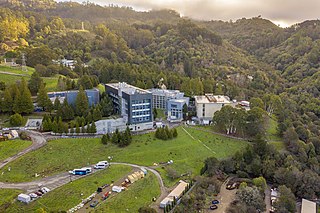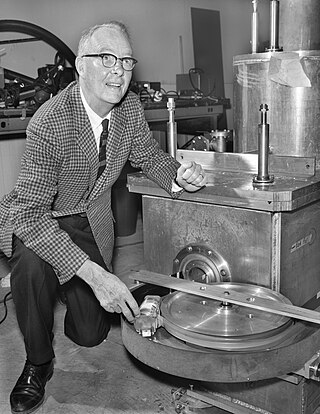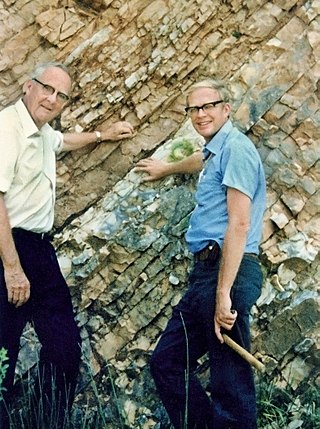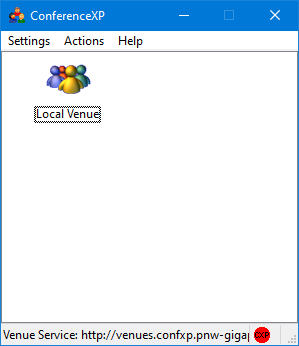
Adobe Flash is, except in China, a discontinued multimedia software platform used for production of animations, rich internet applications, desktop applications, mobile apps, mobile games, and embedded web browser video players.

The University of California, Berkeley, is a public land-grant research university in Berkeley, California. It was established in 1868 and is the state's first land-grant university. It is a founding member of the Association of American Universities and is the founding campus of the University of California system. Berkeley has the most top-ranked departments nationally and is one of the highest-ranked universities worldwide with it being a leading producer of Fulbright, Rhodes, Marshall and Gates Cambridge Scholars. It also produces multiple venture capital-backed entrepreneurs with more startup companies being founded than any other university.

A timeline is a display of a list of events in chronological order. It is typically a graphic design showing a long bar labelled with dates paralleling it, and usually contemporaneous events.

Lawrence Berkeley National Laboratory (LBNL) is a federally funded research and development center in the hills of Berkeley, California, United States. Established in 1931 by the University of California (UC), the laboratory is sponsored by the United States Department of Energy and administered by the UC system. Ernest Lawrence, who won the Nobel prize for inventing the cyclotron, founded the Lab and served as its Director until his death in 1958. Located in the Berkeley Hills, the lab overlooks the campus of the University of California, Berkeley.

Ingres Database is a proprietary SQL relational database management system intended to support large commercial and government applications.

Luis Walter Alvarez was an American experimental physicist, inventor, and professor who was awarded the Nobel Prize in Physics in 1968 for his discovery of resonance states in particle physics using the hydrogen bubble chamber. In 2007 the American Journal of Physics commented, "Luis Alvarez was one of the most brilliant and productive experimental physicists of the twentieth century."

Walter Alvarez is a professor in the Earth and Planetary Science department at the University of California, Berkeley. He and his father, Nobel Prize–winning physicist Luis Alvarez, developed the theory that dinosaurs were killed by an asteroid impact.

NASA WorldWind is an open-source virtual globe. According to the website, "WorldWind is an open source virtual globe API. WorldWind allows developers to quickly and easily create interactive visualizations of 3D globe, map and geographical information. Organizations around the world use WorldWind to monitor weather patterns, visualize cities and terrain, track vehicle movement, analyze geospatial data and educate humanity about the Earth." It was first developed by NASA in 2003 for use on personal computers and then further developed in concert with the open source community since 2004. As of 2017, a web-based version of WorldWind is available online. An Android version is also available.

The Space Sciences Laboratory (SSL) is an Organized Research Unit (ORU) of the University of California, Berkeley. Founded in 1959, the laboratory is located in the Berkeley Hills above the university campus. It has developed and continues to develop many projects in the space sciences, including the search for extraterrestrial life (SETI@home).

Kenneth Yigael Goldberg is an American artist, writer, inventor, and researcher in the field of robotics and automation. He is professor and chair of the industrial engineering and operations research department at the University of California, Berkeley, and holds the William S. Floyd Jr. Distinguished Chair in Engineering at Berkeley, with joint appointments in Electrical Engineering and Computer Sciences (EECS), Art Practice, and the School of Information. Goldberg also holds an appointment in the Department of Radiation Oncology at the University of California, San Francisco.

ConferenceXP is a free and open source video conferencing platform designed to address the needs of academic distance learning / multi-institutional instruction and advanced collaboration scenarios.

WorldWide Telescope (WWT) is an open-source set of applications, data and cloud services, originally created by Microsoft Research but now an open source project hosted on GitHub. The .NET Foundation holds the copyright and the project is managed by the American Astronomical Society and has been supported by grants from the Moore Foundation and National Science Foundation. WWT displays astronomical, earth and planetary data allowing visual navigation through the 3-dimensional (3D) Universe. Users are able to navigate the sky by panning and zooming, or explore the 3D universe from the surface of Earth to past the Cosmic microwave background (CMB), viewing both visual imagery and scientific data about that area and the objects in it. Data is curated from hundreds of different data sources, but its open data nature allows users to explore any third party data that conforms to a WWT supported format. With the rich source of multi-spectral all-sky images it is possible to view the sky in many wavelengths of light. The software utilizes Microsoft's Visual Experience Engine technologies to function. WWT can also be used to visualize arbitrary or abstract data sets and time series data.

Internet Explorer 9 or IE9 is the ninth version of the Internet Explorer web browser for Windows. It was released by Microsoft on March 14, 2011, as the ninth version of Internet Explorer and the successor to Internet Explorer 8. Microsoft released Internet Explorer 9 as a major out-of-band version that was not tied to the release schedule of any particular version of Windows, unlike previous versions. It is the first version of Internet Explorer not to be bundled with a Windows operating system, although some OEMs have installed it with Windows 7 on their PCs. Internet Explorer 9 is the last version that is called Windows Internet Explorer. The software was rebranded simply as Internet Explorer starting in 2012 with the release of Internet Explorer 10.

Deep Zoom is a technology developed by Microsoft for efficiently transmitting and viewing images. It allows users to pan around and zoom in a large, high resolution image or a large collection of images. It reduces the time required for initial load by downloading only the region being viewed or only at the resolution it is displayed at. Subsequent regions are downloaded as the user pans to them; animations are used to hide any jerkiness in the transition. The libraries are also available in other platforms including Java and Flash.
InfoZoom software is a data analysis, business intelligence and data visualization software product created using in-memory analytics. The software is created and supported by humanIT and the Fraunhofer Institute FIT, the same organization that created MP3 compression technology. The software has over 100,000 licensed users and over 1000 customers worldwide.
Seadragon Software was a team within the Microsoft Live Labs. Its product, Seadragon, is a web optimized visualization technology that allows graphics and photos to be smoothly browsed, regardless of their size. Seadragon is the technology powering Microsoft's Silverlight, Pivot, Photosynth and the standalone cross-platform Seadragon application for iPhone and iPad.
The Water Resources Collections and Archives (WRCA), formerly known as the Water Resources Center Archives, is an archive with unpublished manuscript collections and a library with published materials. It was established to collect unique, hard-to-find, technical report materials pertaining to all aspects of water resources and supply in California and the American West. Located on the campus of the University of California Riverside (UCR), it is jointly administered by the UCR College of Natural and Agricultural Sciences (CNAS) and the UCR Libraries. WRCA was part of the University of California Center for Water Resources (WRC) that was established and funded in 1957 by a special act of the California State Legislature and was designated the California Water Research Institute by a federal act in 1964.
Encrypted Media Extensions (EME) is a W3C specification for providing a communication channel between web browsers and the Content Decryption Module (CDM) software which implements digital rights management (DRM). This allows the use of HTML5 video to play back DRM-wrapped content such as streaming video services without the use of heavy third-party media plugins like Adobe Flash or Microsoft Silverlight. The use of a third-party key management system may be required, depending on whether the publisher chooses to scramble the keys.

Fernando Pérez is a Colombian-American physicist, software developer, and free software advocate. He is best known as the creator of the IPython programming environment, for which he received the 2012 Free Software Award from the Free Software Foundation and for his work on Project Jupyter for which he received the 2017 ACM Software System Award. He is a fellow of the Python Software Foundation, and a founding member of the NumFOCUS organization.
Microsoft, a technology company historically known for its opposition to the open source software paradigm, turned to embrace the approach in the 2010s. From the 1970s through 2000s under CEOs Bill Gates and Steve Ballmer, Microsoft viewed the community creation and sharing of communal code, later to be known as free and open source software, as a threat to its business, and both executives spoke negatively against it. In the 2010s, as the industry turned towards cloud, embedded, and mobile computing—technologies powered by open source advances—CEO Satya Nadella led Microsoft towards open source adoption although Microsoft's traditional Windows business continued to grow throughout this period generating revenues of 26.8 billion in the third quarter of 2018, while Microsoft's Azure cloud revenues nearly doubled.













